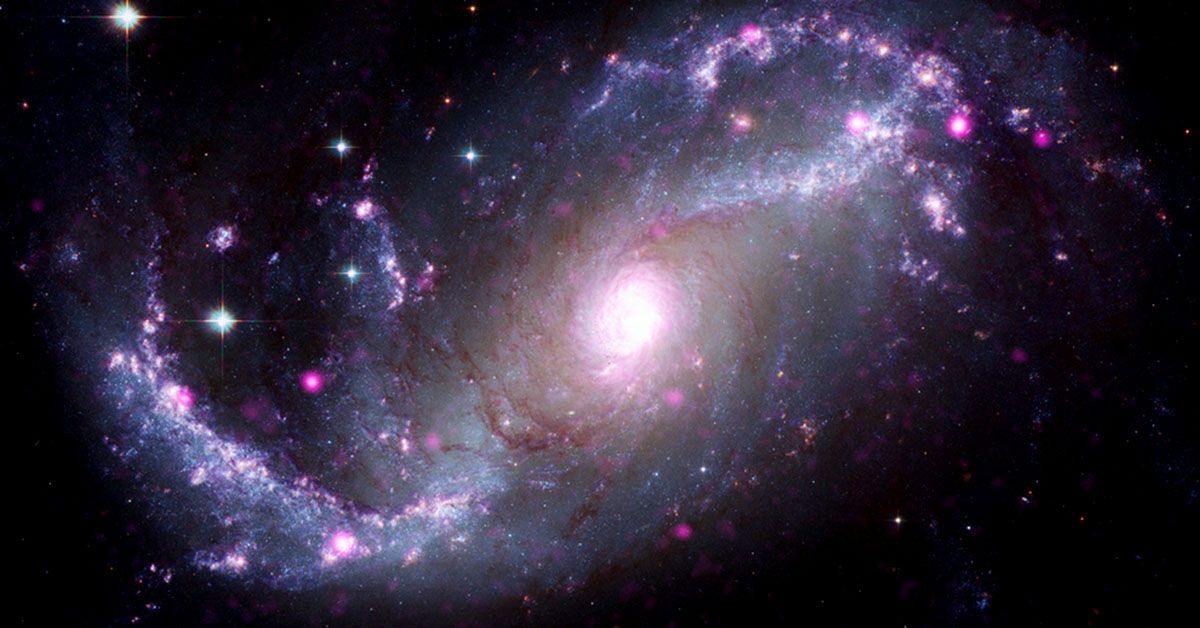Imagine stepping onto a platform, a unique kind of telescope in your hand, ready to explore the universe's infinite expanse. Now, picture that your telescope is a remarkable tool that combines the power of several high-tech observatories, each with its distinct capacities. This unique tool allows you to peer at the cosmos, not just in the visible spectrum but also in X-ray and infrared wavelengths.
Brace yourselves for a spectacular journey as NASA masterfully weaves data from a multitude of advanced observatories into a stellar tapestry of space. This potent alliance of observatories consists of the Chandra X-ray Observatory, James Webb Space Telescope, Hubble Space Telescope, Spitzer Space Telescope, XMM-Newton Telescopes, and New Technology Telescopes.
The Cosmic Quartet: An Overview
Space is a cosmic theatre teeming with infinite performers, each playing its role in the grand show. In our journey, we focus on a select quartet, each having a story as magnificent as the next. Let's embark on this journey, exploring these wonders one by one.
Exploring the Star Cluster NGC 346
Nestled in the Small Magellanic Cloud, far beyond the confines of the Milky Way, lies the intriguing star cluster NGC 346. Acting as a celestial nursery, it is a hub for new stars' formation, awash with gas and dust that serve as their fundamental building blocks.
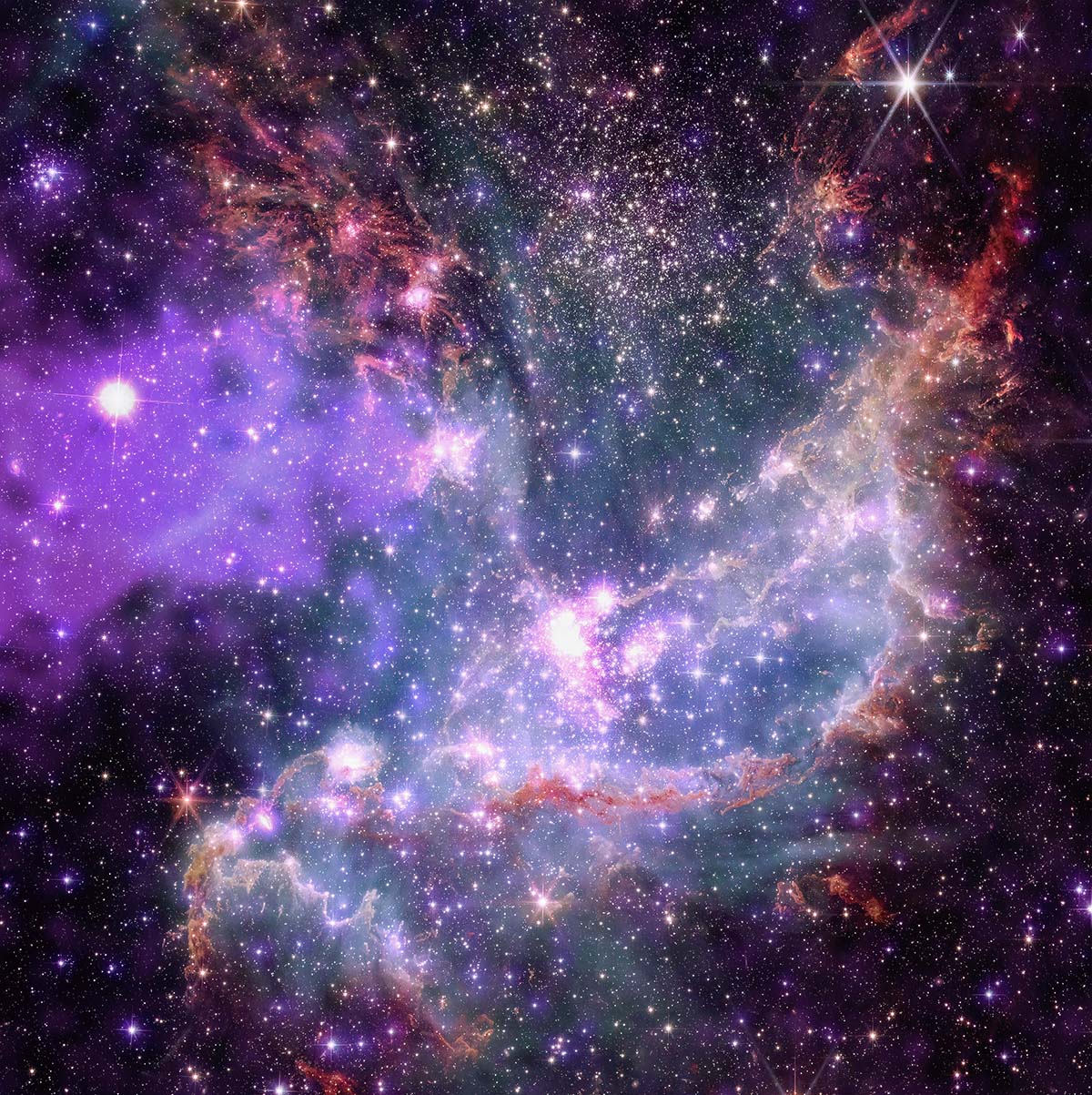
The composite image of NGC 346 is a visual spectacle. It shows plumes of gas and dust, shimmering like ghostly veils against the backdrop of the cosmos. Here we see the aftermath of cosmic cataclysms – remnants of a supernova explosion, painted in spectral hues. The sight underscores the violent yet awe-inspiring processes behind star formation.
Such data is invaluable. It brings to light the lifecycle of stars, capturing the fiery death of a star in a supernova and the subsequent birth of new stars from its remnants. It is a testament to the cyclical nature of the cosmos, where endings often herald beginnings.
Unraveling the Mysteries of the Spiral Galaxy NGC 1672
Moving to another celestial marvel, NGC 1672 is a "barred" spiral galaxy, residing approximately 5.7 million light-years away in the Dorado constellation. It's a cosmic whirlpool, with its arms elegantly swirling out from its center.
The composite image of NGC 1672 is a fusion of data from Chandra, Webb, and Hubble. It presents a tableau of compact objects and remnants of exploded stars, ensconced within the galaxy. Additionally, we see the delicate distribution of dust and gas along the galaxy's arms, tinged in ethereal colors.
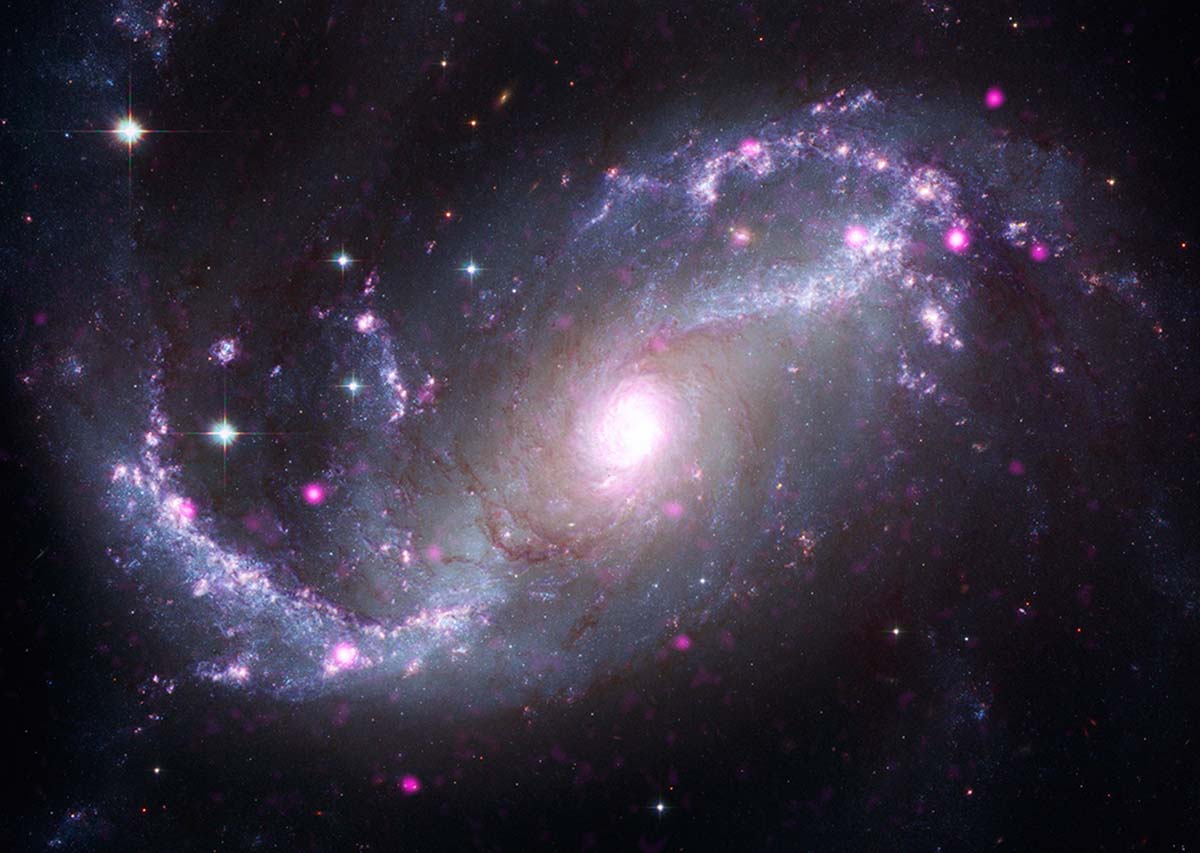
The symbiotic relationship of these elements offers insights into the unique makeup of this galaxy. It elucidates how different components, from neutron stars to dust clouds, interact and coexist within the same cosmic neighborhood.
The Majestic Pillars of Creation: M16 (Eagle Nebula)
Next in our quartet is the M16, fondly known as the Eagle Nebula. This awe-inspiring nebula resides in the constellation Serpens and is famous for its "Pillars of Creation," dark columns of gas and dust that serve as incubators for new stars.
The composite image of the Eagle Nebula is breathtaking. Shrouded in gas and dust, the dark columnspierce the cosmos like magnificent towers. Embedded within these columns are fledgling stars, their birth cries manifesting as radiant X-rays.

This detailed visual presentation of the nebula opens a window into the intimate processes of star creation. It captures the nurturing environment within the pillars, where gas, dust, and young stars create a vibrant cosmic nursery.
Journey Through the Spiral Galaxy Messier 74
Finally, we turn our gaze to Messier 74, a spiral galaxy reminiscent of our Milky Way. This cosmic doppelgänger is located approximately 32 million light-years away in the Pisces constellation.
The composite image of Messier 74 is a montage of various data. It showcases the intricate lacework of gas and dust in the galaxy's arms, depicted in silvery-blue hues in infrared wavelengths. High-energy activity, punctuating the serenity of the galaxy, is highlighted in brilliant streaks captured by Chandra's X-ray data.
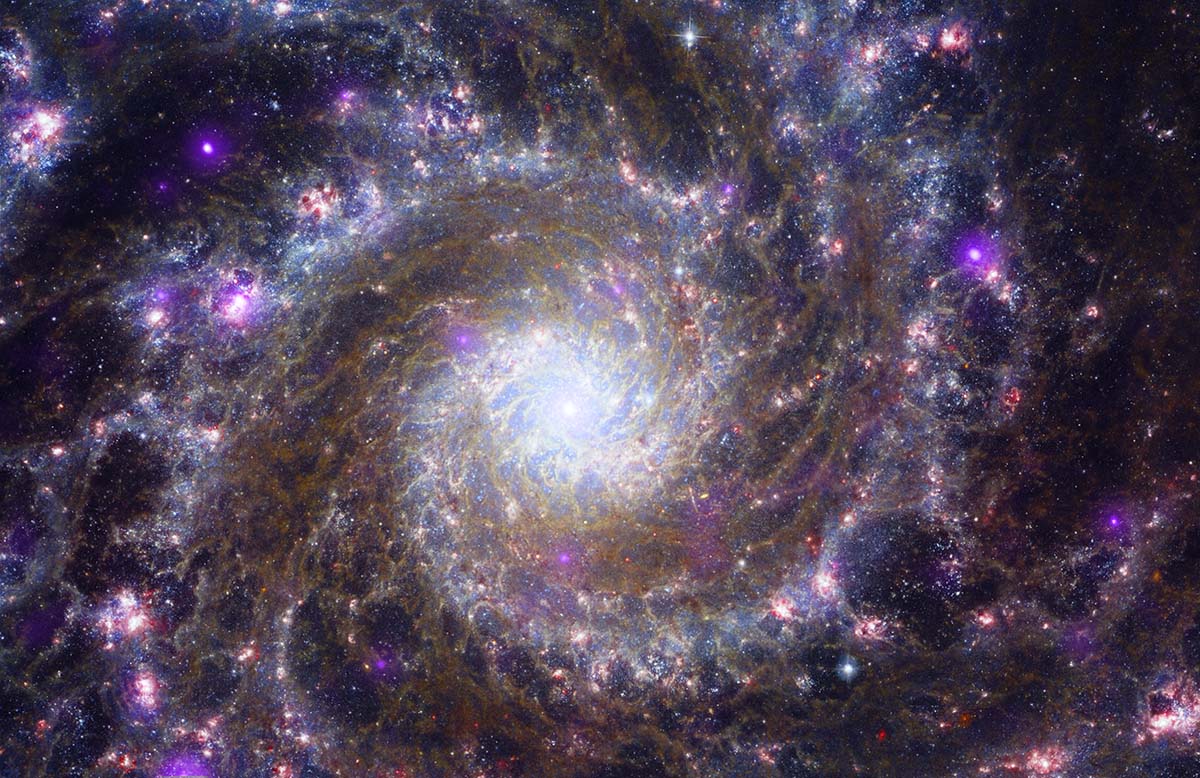
This revealing portrayal of Messier 74 emphasizes the multifaceted nature of galaxies. The galaxy's high-energy activities, glowing gas clouds, and dust lanes are a testament to the rich complexity and diversity that exists within the seemingly tranquil expanse of the cosmos.
The Marvelous Observatories Behind the Images
Looking out into the cosmos requires a variety of telescopes, each tailored to a unique kind of observation. Together, these observatories give us clearer, deeper insights into the universe's wonders.
Chandra X-ray Observatory: A Peek into the Invisible
The Chandra X-ray Observatory is a spacecraft that allows scientists to glimpse the universe's fiery and energetic side. Launched by NASA in 1999, Chandra observes X-rays from high-energy regions, like the remnants of exploded stars or areas around black holes.
Chandra has played a significant role in creating the stunning composite images of NGC 346, NGC 1672, M16, and Messier 74. Its ability to detect X-ray radiation provides a view into the universe's most dramatic events and processes.
To capture these X-rays, Chandra's mirrors are designed to reflect incoming rays at a shallow angle, much like skipping a stone on the water into its detectors. This allows scientists to study phenomena that would otherwise remain hidden from our view.
James Webb Space Telescope: Exploring the Infrared Universe
Next is the James Webb Space Telescope, set to be the most powerful space telescope ever built. It's designed to succeed the legendary Hubble Space Telescope, equipped with the capability to detect infrared light that Hubble cannot.
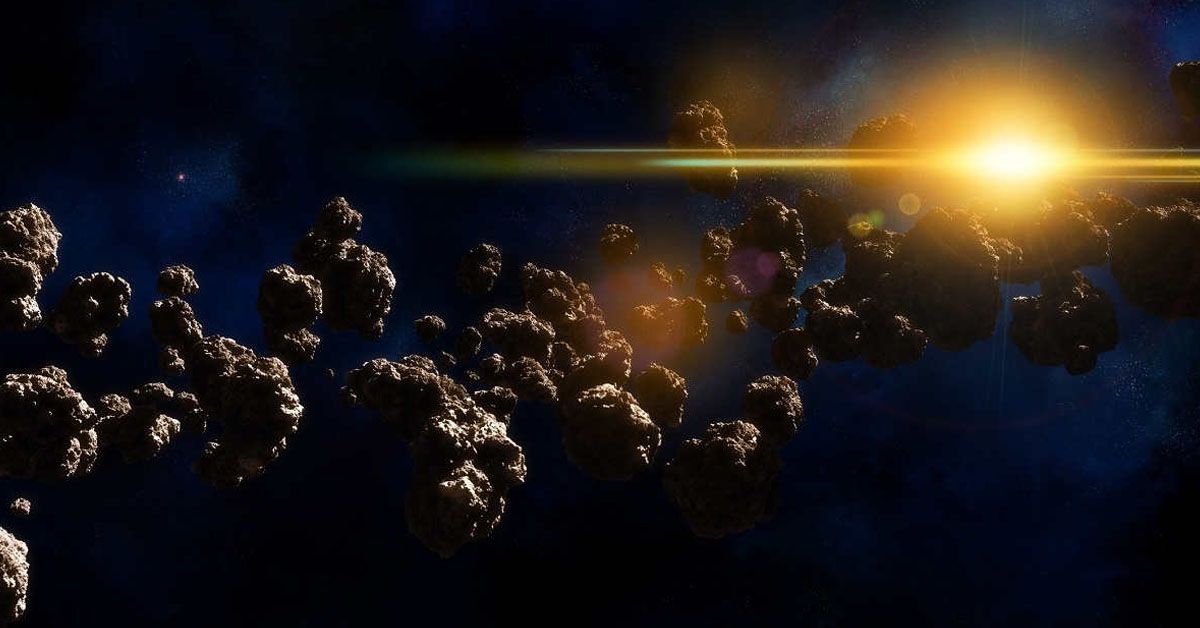
The primary goals of Webb are to study every phase in the history of the Universe, from the first luminous glows after the Big Bang to the formation of galaxies, stars, and planets. Its keen infrared vision allows it to pierce through cosmic dust clouds to see stars forming inside, as well as to detect faint signals of distant galaxies.
The Contributions of Other Telescopes
This ensemble of telescopes also includes the Hubble Space Telescope, Spitzer Space Telescope, XMM-Newton Telescope, and the New Technology Telescope from the European Southern Observatory. Each telescope has its strength; together, its data is merged to produce comprehensive images.
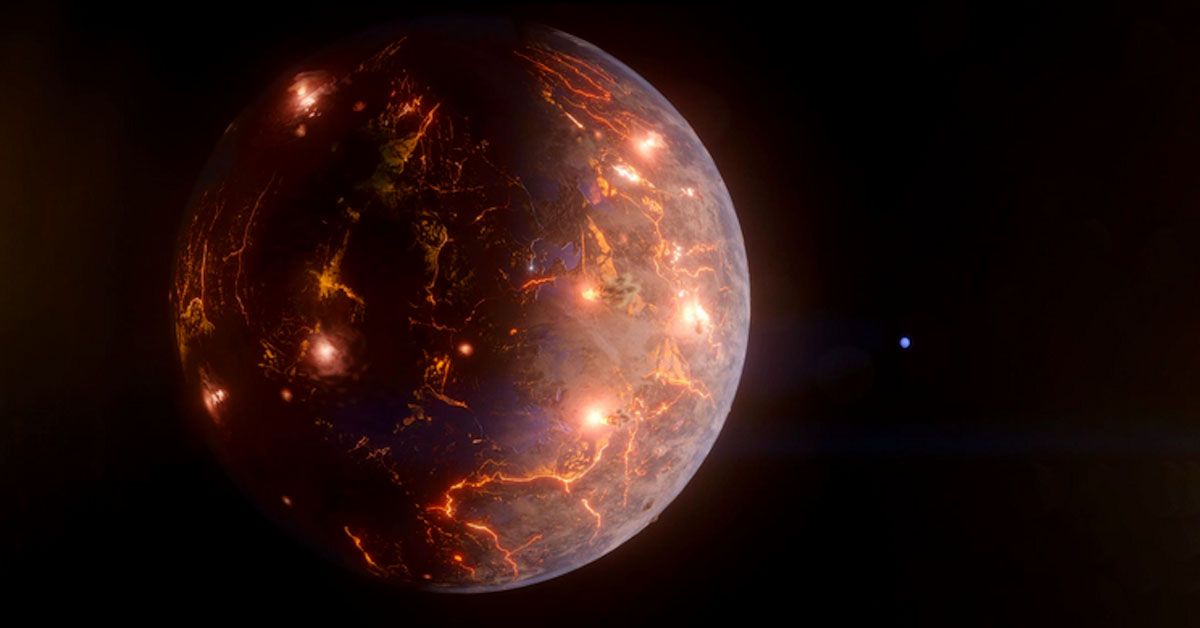
The Hubble Telescope, for instance, excels at capturing visible and ultraviolet light, while Spitzer offers an infrared perspective. The XMM-Newton and the New Technology Telescope fill in additional details, capturing high-energy phenomena and providing high-resolution images.
The Art and Science Behind the Composite Images
These composite images aren't just stunning; they also represent significant scientific data. The different colors represent different types of light or different energies of the objects observed. Scientists use colors to map various forms of light, like X-rays or infrared, which humans can't naturally perceive. This makes the invisible visible and the complex understandable.
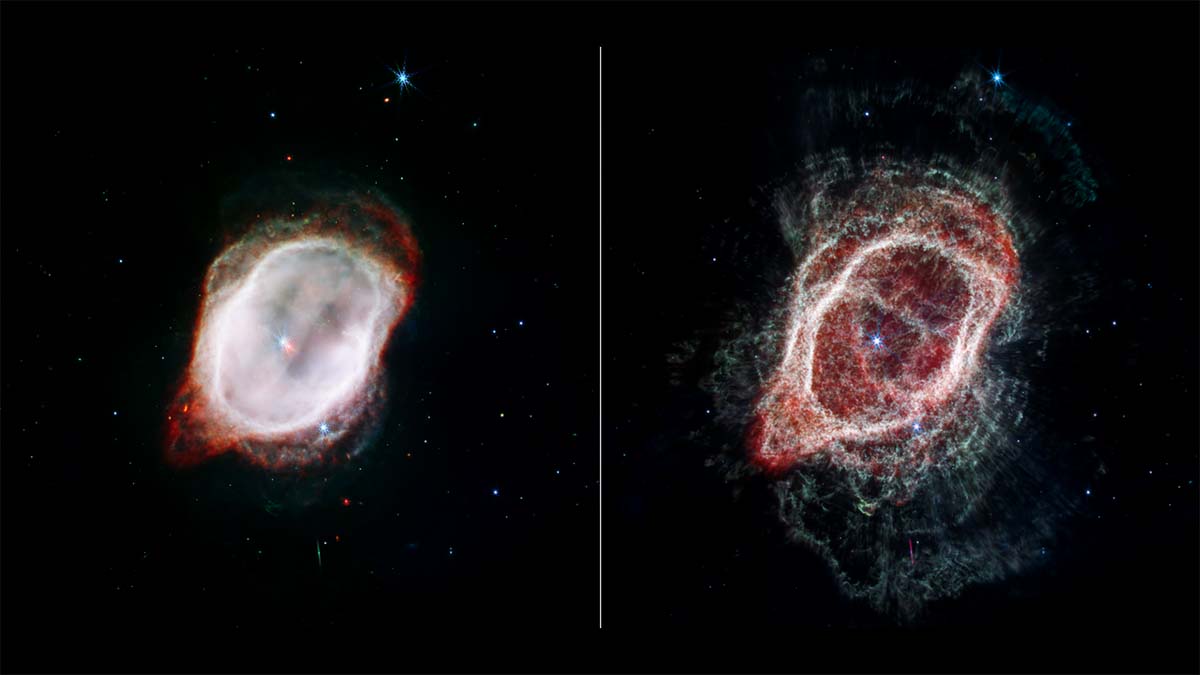
By combining different data sources, these composite images provide a comprehensive picture of these celestial objects. They provide us with detailed visual descriptions, revealing the beauty and complexity of our cosmos and helping us understand the universe's intricate tapestry.
The Continuing Exploration of Our Cosmic Neighborhood
As we continue our cosmic journey, the latest images from Chandra and Webb offer new layers of understanding. The unveiling of these images marks a critical moment in our exploration of the cosmos, offering fresh perspectives on well-studied objects.
These images capture different phenomena from stellar births to supernova remnants to the activities of galaxies' cores contributing to our growing comprehension of the universe's workings. The breathtaking views offered by these images serve as a reminder of the wonders that lie beyond our earthly confines, ready to be explored and understood.
Sources: nasa.gov / chandra.harvard.edu
